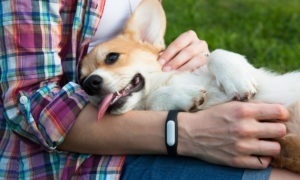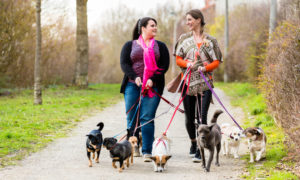“How will AI solutions allow hotels to shift bookings away from the OTAs onto the direct channel?” an AI synthesis
Our AI-powered chatbots are purpose-built for CX and pre-trained on millions of customer interactions, so they’re ready to solve problems 24/7 with natural, human language. Engati is a chatbot and live chat platform that enables users to deploy no-code chatbots. With Engati, users can set up a chatbot that allows travelers to book flights, hotels, and tours without human intervention. Zendesk is a complete customer service solution with AI technology built on billions of real-life customer service interactions. You can deploy AI-powered chatbots in a few clicks and begin offloading repetitive tasks using cutting-edge technology like generative AI.
Museums can leverage tools like QR technology and near-field technology (NFC) to bring collections to life through immersive experiences. These technologies can be used to create museum tours or make exhibits more interactive. A mobile digital journey provides valuable insight into customer behavior and helps businesses understand their target audience better. Analyzing the outcomes of a mobile digital journey allows a brand to narrow the targeting, see where customers are most likely to convert and improve the overall mobile experience. Offering mobile self-guided tours that visitors can access on their mobile phone is one of the easiest strategies to meet visitors’ expectations in the post-Covid era.
Switzerland’s most visited museum showcases the past, present and future of mobility with interactive and varied exhibits. In addition to the museum, unique attractions found nowhere else in Switzerland, such as the film theatre, planetarium, Swiss Chocolate Adventure and Media World, are just waiting to be discovered. Her main areas of work have been focused on the tourism sector, specifically on issues related to consumer behaviour (customer loyalty), the use of technology (robots) and gender. Her professional activity has been linked to the field of tourism management from a marketing point of view. She has worked as marketing director in a company specialised in strategic consulting and management of sports centres and spas in hotel chains (Meliá Hotels International, Barceló Hotel Group). We help airlines cut call center costs while enhancing traveler experience, so that customer interactions will not damage your earning per seat any longer.
This should be taken into account in a city’s marketing strategy and could be a major point of attraction. If a city were to uniformize its approach to reduce contact, it could appear as a safer place for vacation and bring in more revenues. NFC and QR technologies are an excellent solution to surprise and occupy tourists and visitors in waiting rooms. All they have to do is scan a QR code with their phone or approach an NFC token to enjoy the benefits mentioned above.
As for business travel, a Deloitte analysis released this April revealed the sector’s full recovery might not happen until late 2024 or 2025. United Airlines CEO Scott Kirby acknowledged in June that the U.S. was experiencing a “business recession,” even as leisure travel was making significant progress in its recovery. Hop on the B-Line public transit system to get around Chico, or check out the Amtrack bus to travel outside the city.
Not only is it easier to sell services to customers, but implementing technology also eliminates the need for spreadsheets and pen and paper reservations. Because mobile booking systems can handle organizational tasks automatically, companies can save time, and money. Back in the day, one had to make a phone call or speak face-to-face with a service provider in order to plan their vacation. In 2023, it is possible to make all your bookings online, allowing travelers to plan their escapades from the comfort of their preferred devices.
The Tourism Innovation Program is made possible by a $10 million fund from the Ministry of Tourism. This publication, accompanied by a caption and a hashtag, will link to a direct promotion of the experience, thus encouraging more people to try your experience. Thus, the user is no longer just a passive consumer, but becomes an important pillar in the marketing strategy by giving visibility to the company through its networks. Thanks to the Selfie Booth, each user has the opportunity to create a personalized and unique photo that will mark the experience with your brand or institution. This memory can then be shared through various social networks such as Facebook, Twitter, LinkedIn, etc.
Translation services
So, if it is in your budget, see if you can hire multiple interesting voice narrators, if not, ensure the one you use has a fun and unique voice. The platform aims to revitalize static exhibitions and to continuously renovate and expand the proposed themes. The regulars of your site will be pleased to return regularly to the site to discover new approaches and perspectives. Museums are not only places where priceless artifacts are preserved but also sources of learning about history, culture, and science. They allow people to learn more about art and inspire them to be better individuals in the community. New variants seem to appear before every holiday season and restrictions come and go.
Territorial marketing is a strategy that aims to improve local development actions in cities or regions by adding value to the area in which they are located. This added value can come from different things such as geography, climate, history, culture, etc. There can be an overlap between city and destination marketing but they are not the same thing. While city marketing refers to the promotion of a city, destination marketing refers to the promotion of a city, a country, specific region, or attraction. Many millennials and gen Z may not find relevance in museums since they may not consider the past applicable to modernity. To better cater to these customers’ sensibilities, it is advisable to give them a connection between the displays and their modern lives.
Businesses can use Freshchat to deploy AI chatbots on their website, app, or other messaging channels like WhatsApp, LINE, Apple Messages for Business, and Messenger. Flow XO chatbots can also be programmed to send links to web pages, blog posts, or videos to support their responses. Additionally, you can customize your chatbot, including its name, color scheme, logo, contact information, and tagline. Botsonic also includes built-in safeguards to eliminate off-topic questions or answers that could misinform your customers.
This article serves as an insight into what museums of the future may look like, and what innovative strategies and technologies are going to be implemented. Many museums have been forced to make tough choices as a result of stay-at-home orders and mandatory closures. Museums will face the challenges of working in a post-pandemic future after facing the short-term financial effect of COVID-19. Now that people all over the world are getting vaccinated, the desire to travel is coming back in full force.
An omnichannel strategy combines brick-and-mortar locations, social media platforms, websites, email, and mobile to create a cohesive customer experience. When all communication channels are working efficiently and together, customers gain access to a complete phygital content marketing experience. Adopting conversational chatbots is no longer just a possibility for tourism organizations in Quebec – it’s an option to be seriously considered. By enhancing the customer experience, automating processes and providing valuable data for personalizing services, chatbots help tourism businesses stay competitive in an increasingly demanding market. What’s more, it’s important to realize that the arrival of the conversational agent in no way detracts from human contact.
City Resources
MySmartJourney can be used by museums, historical sites or exhibition halls that wish to offer visitors a unique and above all dynamic experience. The various hotel establishments, restaurants or even municipal parks can use this technology to create an interaction with the visitor or tourist through a mobile device. The use of satisfaction forms for travelers and tourists can be very helpful in improving their tourism experience. It allows various destinations to improve their services and communicate easily and quickly with all visitors in order to create a better experience every time. Since the advent of the pandemic, the economic and tourism recovery has seen a new light.
It enables companies to respond more effectively and naturally to their customers’ requests, which in turn can help increase their satisfaction and loyalty. Artificial intelligence is changing the tourism and travel industries, especially following the COVID pandemic. Hotels, airlines, and hospitality service providers now rely on AI-powered tools to optimize operations, maximize profits, and boost the user experience. And most importantly, humans are getting left behind as artificial intelligence in tourism becomes more efficient. Due to the pandemic, over 62 million people lost their jobs in the hospitality industry, and this number may very well continue to rise. The silver lining is that, even with natural language processing, AI-enabled robots and assistants are yet to replace the unique human touch.
- The rebound web, as its name suggests, goes against the immersive experience offered by the usual digital offerings.
- It can serve as an interactive signage, a docking station, a guided tour, a table order, or a relay to reservation systems.
- Some institutions reported that laying off staff was the only way they could remain operational.
- We redesigned all of the existing airport signage and added new sign types at key locations throughout the airport based on customer and employee feedback.
- The current pandemic has had a negative effect on the financial situation of the majority of people.
- Videos, pictures, and blog posts on your website will all bring attention to your city’s attractive elements.
Let us help you transform your communications and customer approach, and give your business the competitive edge it deserves. Reecall’s Virtual Switchboard is a major innovation that promises to transform the corporate communications landscape. It is a switchboard application powered by advanced artificial intelligence technology.
Once the design is approved, the developers will create a minimum viable product within the ballpark figure of $8k. To add the remaining features to the MVP and complete the development stage, you’ll need to pay around $10k. Online platforms like Visits.ai allow travelers to plan their trips with one click.
The best phygital approach for a business depends on the way it normally addresses its audience. A brick-and-mortar shop’s phygital tactics will be very different from those of a primarily online business. A chatbot’s algorithm is programmed to mimic a human conversation by asking questions and giving relevant recommendations and solutions. This helps minimize the occurrence of human error while resolving customer queries quicker. You can think of a travel chatbot as a versatile AI travel agent on call 24/7.
For example with a quiz on “what type of exhibition corresponds to your mood of the moment?” or even to tell fun facts with gamification. Virtual museums also provide an alternative to visiting museums during periods when they are closed, such as during the coronavirus lockdowns. You can foun additiona information about ai customer service and artificial intelligence and NLP. Museums can employ virtual storytelling to share their exhibitions by using content publishing platforms that can be shared across a variety of devices.
MysmartJourney offers a cost-effective alternative for the production and maintenance of any historical, cultural, tourist or heritage site. This platform offers a secure experience for all users (employees and clients) from various sectors. https://chat.openai.com/ They typically require extensive expertise and incur significant costs for clients. The MySmartJourney platform offers an affordable alternative that allows organizations to build unique and dynamic experiences for their users.
Here, the best thing is to disorganize the visit in order to better organize it. A good web application can allow visitors to obtain information quickly and easily. For example, QR codes or NFC chips located in strategic places can help engage the user, who will have access to informative content instantly through his phone, without downloading an application. Artificial intelligence can radically Chat GPT change the customer experience in stores, and automate certain processes. While in Europe, Blockchain technology consists in the decentralized and secured management of information, where each intermediary directly records the information related to its role. The content accessed can also vary according to the season or time of day and offer a new experience to the customer at every moment.
Digital mediation practices offer an excellent opportunity to activate perceptual memory. MySmartJourney offers you the best tools to implement your phygital strategies. Our contactless technology is an easy, quick, and fun way of creating innovative experiences. This means that users can use it from any sort of device without the need to install an app. In the past three decades, virtual reality (VR) and augmented reality (AR) have primarily been evolving entertainment (Majd and Safabakhsh, 2017). While VR and AR share similar technologies, such as various tracking sensors and displays, they represent two different approaches to blending the physical and virtual world realities (Scavarelli et al., 2021).
The cost of artificial intelligence in tourism
Visitors won’t have to be worried about using a shared audio device, and museum staff won’t have to be concerned about sanitizing audio equipment all the time. Audio guides are integrated in the museum experience in order to help visitors understand the exhibitions without the need for a physical tour guide. Tourist offices that offer any type of service to travelers can use the MySmartJourney platform to share informational content that details the services offered. They can also share nearby tourist attractions and engage customers by offering products and services online.
Successful museums are those that can preserve our history by holding on to artifacts, relics, artwork, etc.A museum’s purpose is to collect, preserve, research, exhibit, educate, inspire and entertain. Some museums are built around one culture or society, while others house many exhibits on different cultures and periods. Since many people nowadays only need their laptop, a cup of coffee, and an internet connection in order to work, that means they can sit down and “go” to work wherever the wind takes them.
It is easy to integrate recipe ideas that encourage redemption, but also the discovery of products from partner producers. QR codes can also inform the buyer about the packaging used and the concept of sustainability. Published on May 4, 2022 on the Ministry of Economy and Innovation website, the article introduces the notion of sustainable packaging for consumer goods. In an intention of sustainable development, the packaging should be thought in the idea of being recyclable, preferably without plastic and low producers of greenhouse gases.
It’s not an exaggeration to say that walking routes are perfect for everyone. A multifamily gathering can happen on the trail itself, giving the adults the perfect place to hang out and the kids room to play and run around. The ONLYLYON project aimed to promote the city of Lyon, a major tourist destination in France. This project consisted of developing a set of measures focused on enhancing the image of the city and promoting it as a creative hub. In order to define a territorial strategy, it is important to know what the market is like, and what the competitive landscape looks like. You must analyze the socio-economic context of the region and determine whether there are particular factors that could affect the success of your project.
An omnichannel digital strategy guarantees an interactive, harmonious and attractive experience. A web application allows them to access only the content that interests them, wherever they are. This is a simpler process for the visitor, but also for the establishment, which no longer has to distribute equipment such as audio guides, or have to develop an application. Proximity communication technology allows data to be exchanged between two devices, such as an interactive kiosk and a mobile phone, using a small chip. NFC technology offers access to contactless content via an Internet connection and in complete security.
All they have to do is scan the QR code with their mobile phones to have access to personalized content or activities. Virtual reality may not sound like it belongs in the tourism industry, but it is actually the perfect place for it. Establishments such as hotels, cruises, vacation tours and more often use virtual reality or augmented reality in order to elevate the booking experience. You can book a flight or a hotel, download your boarding passes on your phone, buy tickets for a museum, browse a restaurant menu on a QR code, etc. Of course, in-person communication and interactions are still available to supplement the digital experience. However, if visitors want more independence, travel technology and innovation make this possible.
Travel chatbots can also drive conversions by sending prospective travelers proactive messages, personalized suggestions, and relevant offerings based on previous interactions. This means bots can also automate upselling and cross-selling activities, further increasing sales. Unlike your support agents, travel chatbots never have to sleep, enabling your business to deliver quick, 24/7 support.
By automatically helping multiple travelers simultaneously and deflecting tickets, chatbots for customer service free up your agents to focus on the complex travel issues that require a human touch. This can boost chatbot tourisme agent productivity, increase resolution time, and allow you to serve more customers without hiring additional support agents. Automating customer interactions can significantly reduce customer service costs.
It’s critical in the post-Covid era to give contactless experiences to those who anticipate them. Tourism destinations that take advantage of QR codes, NFC technology, and augmented and virtual reality technologies attract more travelers as they make their stay more engaging and rewarding. The main advantage of phygital marketing is the way in which it advertises your store and the freedom it gives marketing teams. Incorporating touch screens, having an interactive storefront, and even incorporating augmented reality into the shopping experience is a way to engage shoppers who are not necessarily in-person shoppers.
Ultimately, a successful business is measured against customer experience and the use of NFC technology is guaranteed to improve customer experience. The possibilities are endless with this form of technology and you can be as creative with it as you like. Whilst you can use it simply to improve efficiency within your hotel, you can also be more innovative. The use of NFC information technology is creating more seamless customer and guest experiences. The most common use of NFC technology that you might have seen in practice in your everyday life is with contactless payment.
Even if the world is slowly recovering from the covid-19 pandemic, there are still several regulations taking place and physical contact is still to be avoided when possible. Through the use of NFC integrated technology visitors can access the content of your choice through their phones, thereby reducing the chance of exposure to covid-19. Whether you want to keep your visitors occupied during a queue or multiply their visits with varied content, using MySmartJourney requires no programming knowledge. You can give free rein to your imagination to create original and fun scenarios and game modules.
This framework will be used in the empirical study that is presented in the method section. From Figure 1, it can be observed that the co-experience dimension plays a central role in the interactions between AI applications and users because it constitutes the main source for the experience. The conceptual framework also considers the double perspective of production and experience domains along the three dimensions identified. Because all the dimensions are closely linked, collective management is the only way to create an innovation-based sustained competitive advantage. Customers may come for products (or services), but they stay because of great customer experience.
Chatbots reduce the need for a large support team, enabling companies to reallocate their human resources to more strategic, value-added tasks. This reduction in operating costs is particularly beneficial for small businesses in the tourism sector. The guest can communicate with the tourism company through this AI powered chatbot tool, which could be linked through any website or mobile application like Facebook, Whatsapp, etc. This tourism chatbot tool is usually chat-based, ensuring timely support and assistance to the guests. Roundtable participants highlighted that this technology would be very useful in the future to be able to personalise their visit to cultural centres. However, at present, they have not been able to make use of it because it is not yet implemented.
If you’re interested in learning more about the possibilities that are available to you, MySmartJourney helps businesses implement NFC technology in innovative ways to create fun and unique experiences. With our platform, companies can broadcast text, visual, video and 3D content. They can create self-guided tours for museums, art galleries, historical sites, parks, resorts and much more. For tourism businesses in Quebec, such as hotels and attractions, the integration of this technology represents an opportunity to stand out from the crowd and offer memorable experiences to their visitors.
The eVisa will be a one-year, multiple entry visa, allowing tourists to spend up to 90 days in the country. The tourist visa allows you to take part in tourism-related activities such as, events, family & relatives visits, leisure, and Umrah (excluding Hajj) and excludes other activities such as studying. In conclusion, the article explores the potential of AI to transform the hotel industry by improving direct bookings and enhancing the guest experience.
Health spas and health resorts – a little time out
They allow better communication of essential information to customers, such as sanitary measures, modification or cancellation of their reservation and allows better management of their requests. Some museum employees can lose their jobs as a result of future improvements, such as online ticketing and hands-free gift shops, once it reopens entirely. The museum industry has had to pivot and reconsider what it means to work in a museum. Designers and architects will need a way to prevent germs and viruses from spreading in museum gift shops, where visitors pick up objects and put them back on the shelf for others to touch.

It will be easy for a visitor who has an interest in a particular topic to find all the data related to it just by expressing it. It was the innovations in transport and travel that made tourism possible in the 21st century. Today, technology is used to guide travelers and ensure customer satisfaction at every step of their journey. City marketing or city branding refers to the promotion of certain attractions that make a particular city unique amongst others in order to attract more travelers. Advertising on social media can help you reach those who would otherwise be unaware of what museum exhibits have to offer. By using the Internet you can also connect better with millennial and gen Z audiences, who tend to disregard traditional media when looking for cultural experiences.
Ask Skift: Why Hasn’t the U.S. Made a Full Tourism Recovery? – Skift Travel News
Ask Skift: Why Hasn’t the U.S. Made a Full Tourism Recovery?.
Posted: Mon, 24 Jul 2023 07:00:00 GMT [source]
It includes all the interactions that take place online between a customer and a brand. Announce the release of your experience and web app by writing a compelling press release and share it using a public relation distribution website. You can also send it directly to your local media outlets, including television, print, and radio. With the rise of social media, we also recommend reaching out to local bloggers and influencers who may be interested in promoting and advertising the experience.
After all, they allow businesses to optimize the consumer experience during the purchase process and strengthen their position in the market. Devising effective SEO strategies that increase traffic to your website is a crucial component of managing a successful online travel business. It’s important to optimize your website for search engines if you want to attract visitors and increase conversions. Search engines like Google and Bing regularly modify their algorithms in order to display travel websites with pertinent content on their results pages. In today’s digital landscape, tourism organizations risk falling behind if they don’t have an online presence. Travelers like to browse for traveling services online as it’s more convenient and allows them to book activities or accommodation last-minute in real-time.
It’s critical to provide material to visitors without requiring them to interact with items. Physical displays can be cleaned regularly, but they don’t provide the convenience visitors are looking for when it comes to safety. In order to encourage visitor engagement, you need to take care of the design, functionality and customer journey through your website, mobile app or MySmartJourney web app. Make sure your website is compatible with different devices (computer, mobile phone and tablet).
Local organizations and businesses can help promote museum exhibits and attract visitors by collaborating on these efforts. For example, the Smithsonian Institution works closely with NASA on its traveling astronomy exhibit to present it at various locations throughout the country. One of the most successful ways to enhance museum attendance is via partnerships. A big part of a museum’s job is to encourage people to visit from all over the world. Informal partnerships are a common way for museums to attract individuals who otherwise would not have visited the museum.
Whilst it can be utilized by museums, it can equally be used in any public space that will benefit from an exchange of information and interaction. There are alternatives available, such as MySmartJourney that can provide you with visuals on your phone along with audio, which complement each other. These visuals are more accessible and can interact with the exhibit in a way that audio guides cannot, creating a more exciting and well rounded visitor experience. MySmartJourney’s content management system requires no programming knowledge and ensures easy creation of digital journeys. The construction of the scenario is done directly in the web application, with an easy layout. The game modules are easy to integrate and the media content is added in an intuitive way.
Botsonic offers custom ChatGPT-powered chatbots that use your company’s data to address customer queries. With Botsonic, you use a drag-and-drop interface to set up a chatbot that answers traveler questions—no coding is required. Our AI-powered chatbots can help your business provide fast, 24/7 support to answer questions without agent intervention. Chatbots can also collect key customer information upfront, freeing your agents to tackle complex issues.
Wide open rooms flanked and packed with showcases or art are common exhibition spaces at art and cultural museums, which has a disastrous impact on social distancing on crowded days. Exhibits and their configurations need to be reworked to keep the six-foot gap in mind. This poses a very difficult problem for exhibits aimed for children in science and space museums. Visitors will still experience queues and need lobby space even though they buy their tickets online. It is envisioned that there will be sculptural and artistic lobbies, most of which are enclosed within an outdoor courtyard and allow lines to shape in the open air.
This model sets out the fundamental aspects to be developed through AI tools in a user’s journey map from both managerial and users’ perspectives. These tools could be implemented at the pre-experience, experience and post-experience phases around the three dimensions considered. In the model (Figure 2), the HAIC is the centre that emerges from the functional and contact dimensions. During the pre-experience phase, communication strategies of cultural institutions could reinforce the planning of the visit through the implementation of AI. These strategies include pre-visualisation of the spaces, schedules and reservation of experiences.




















